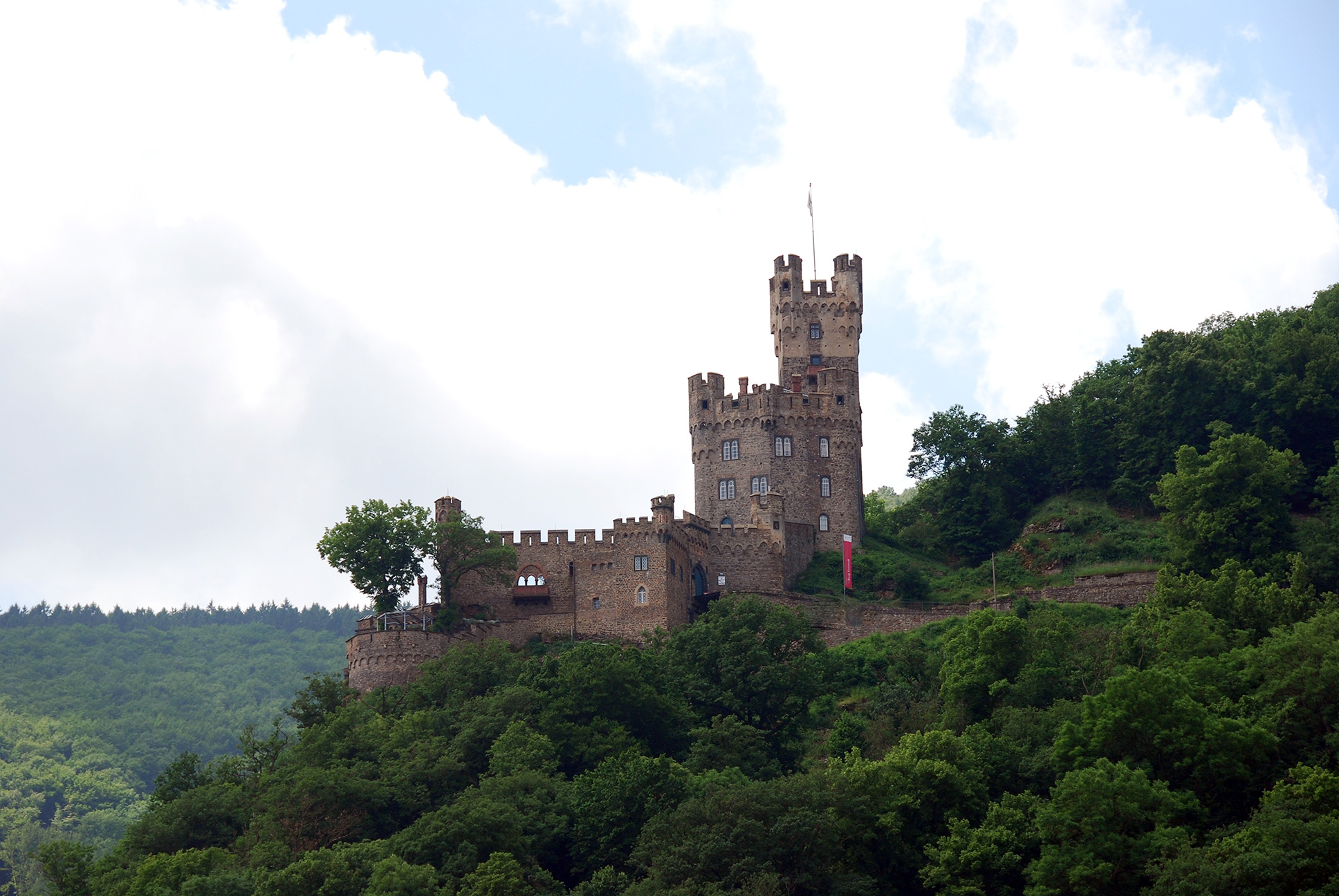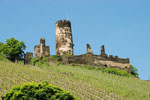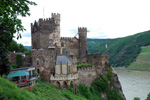History
Burg Sooneck was constructed as early as the 11th century and takes its name from the nearby Soon Forest. It was built, along with Burg Reichenstein, Burg Heimburg, and Burg Vauzburg, to protect the area around Niederheimbach, which was owned by the abbey of Cornelimunster.

In 1254, Burg Sooneck and Burg Reichenstein castles were besieged by the League of Rhenish Towns to end attacks by robber knights who enriched their coffers with tolls and taxes collected on the Rhine. After the territory around Niederheimbach was purchased in 1270, peace was restored between the Archbishop of Mainz and Phillip von Hohenfels. However, unrest would return upon violating the treaty with Phillip's son, Dietrich von Hohenfels. As a result, Burg Sooneck was destroyed in 1282 by roops of King Rudolph I, who then imposed a ban on rebuilding the castle.
In 1346, the Elector Heinrich III of Mainz granted Johann, Knight Marshall of Waldeck, with Burg Sooneck, Burg Reichenstein, and Burg Heimburg. After the prohibition of construction was withdrawn by Emperor Charles IV in 1349, Burg Sooneck was rebuilt with its corner turrets of the Keep and Great Hall representative of the style during the middle of the 14th century.
In 1689, Burg Sooneck was destroyed by King Louis XIV's French troops during the War of the Palatine Succession, along with the other castles on the left bank of the River Rhine.
In 1774, ruins of the castle were granted to residents of Trechtinghausen, who established vineyards inside and outside the castle grounds. In April of 1834, the castle ruins were purchased by members of the Prussian royal family, and the restoration of Burg Sooneck castle began in 1842. It represented the third Rhine castle to undergo rebuilding by the Prussian royal family, following Burg Rheinstein and Schloss Stolzenfels, rebuilt to become more grandiose and romantic. In contrast, efforts regarding Sooneck concentrated on restoring the castle to a functional state, in addition to utilization as a royal hunting lodge.
Apart from King William visiting the castle in 1863 and 1875, it was never used as a hunting lodge as intended. Eventually, the castle passed to state ownership in 1918. After World War II, Burg Sooneck was placed under the control of the Administration of the Castles of the State of Rheinland-Palatinate, who still manage the castle's upkeep.
Castle Highlights
Burg Sooneck is one of many castles between Mainz and Coblenz, Germany, along the River Rhine. The best views may be seen from the river while cruising along that stretch of the Rhine. Typically, cruise boats stop approximately every 30 minutes at various points along the river.
When traveling by vehicle to Burg Sooneck, the hill towards the castle is accessible via the B9. A car park area exists on the right just after passing the town of Niederheimbach along Soonecker Str. After a short walk from the car park along the road, the castle will come into view. Thereafter, you will enter by walking over the drawbridge and through the main gate. While guided tours are provided in German, handouts in English and other languages are available to describe rooms visited during the tour.
Burg Sooneck was restored to a simple yet romantic plan, with many colorful roses growing along its ramparts. As the Keep is relatively large, it is best to view it from a distance in the outer areas of the castle. The Knights Hall contains a sizeable neo-gothic fireplace and furniture from Schloss Stolzenfels. The room is adorned with a picture of a Prussian soldier, perhaps someone from the Prussian royal family. The interesting part about the picture is that no matter where you stand in the room, the eyes of the soldier eerily follow you.
The dining room contains a large painting by Fritz Schutz depicting the Battle of Koniggratz. The dining table and chairs are from the mid-nineteenth century. The King's Study includes a fashionably elegant roll-top desk.
It is possible to visit Burg Sooneck in only a few hours. Consequently, visiting the nearby castles of Burg Reichenstein or Burg Rheinstein, both located along the B9 heading east towards Bingen on the same day, is possible.
Burg Sooneck has a legend.






